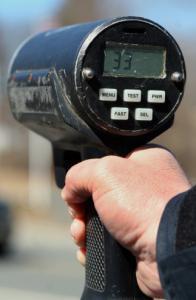A hydraulic excavator (digger) is a large vehicle that is designed for excavation and demolition purposes. Hydraulic excavators consist of a chassis, boom, and bucket, and move via tracks or wheels. They range in size and function, an example of which is the similar but smaller “mini excavator.” All versions are generally designed for the same purposes. Hydraulic excavators weigh between 3,000 and 2 million pounds and their speed ranges between 19 HP and 4,500 HP.
How Does A Hydraulic Excavator Work?
Hydraulic excavators are entirely dependent on hydraulic systems. The hydraulic excavator’s base/undercarriage consists of a track or wheeled platform and provides transportation for the vehicle while supporting the chassis. The chassis allows the driver to control the hydraulic excavator by using levers to drive the vehicle, raising the boom up and down, and controlling the bucket. Because the chassis is built on top of the undercarriage, it is able to rotate 360 degrees. The boom and bucket are attached to the chassis, work in conjunction to move materials, but are controlled independently.
Applications
Hydraulic excavators are used for a wide variety of applications, the most notable being excavation. They are also capable of being used for demolition purposes, however, as even the smallest models are more than capable of demolishing buildings. Hydraulic excavators are also commonly used for moving large amounts of materials, such as minerals, from one area to another. Hydraulic excavators are usually used in conjunction with bulldozers and loaders for construction purposes.
Advantages
Hydraulic excavators have many advantages that allow them to be used in the ways that they are. For example, they are small enough to work on specific tasks within a project area and can usually be transported from one project to another by either being towed or stored on a large truck. Hydraulic excavators can also take advantage of many different attachments: a mallet for demolition purposes, a blade for scraping, or a grapple for picking up objects. Hydraulic excavators are also widely available and can be purchased new or used.
Disadvantages
Hydraulic excavators have few disadvantages, most of which are expected in such a vehicle. For example, hydraulic excavators are heavy and cannot simply be driven across large distances or on non-reinforced roads. Likewise, they generally use large amounts of fuel and can be a very expensive investment, the latter being countered by the fact that they can remain operable for decades. Additionally, hydraulic excavators can be difficult to repair due to their large size and many moving parts.




Follow Us!